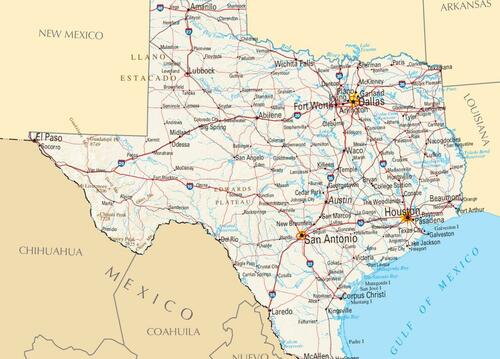
How To Broker A Gerrymandering Ceasefire
Authored by Andy Jackson via RealClearWire,
The United States is in the middle of another round of the redistricting wars.

This latest battle began in late August. The Texas legislature approved maps that will likely result in five additional Republicans being elected to Congress. In response, the California legislature passed a plan that would likely result in five Republicans being replaced with Democrats. The California plan is subject to voter approval in November.
Those appear to be just the opening salvos in the mid-decade redistricting fight, as other states look to jump into the fray.
It is time for a ceasefire.
But how?
Many redistricting reform advocates have focused on changing who draws the maps. They have called for redistricting commissions to take that responsibility away from state legislatures.
Commissions are not a panacea, however. They are often unaccountable, with members usually serving temporarily and not subject to being fired, recalled, or defeated for reelection. They can also be manipulated by partisan groups that infiltrate hearings pretending to be ordinary citizens.
Nor do commissions guarantee states protection from lawsuits. For example, a group of citizens successfully sued the Michigan Independent Citizens Redistricting Commission for racial gerrymandering in 2023.
More important than the “who” of redistricting is the “what.” What are the standards being used to draw districts?
On the heels of the last midterm election, I co-authored a comprehensive report on limiting gerrymandering for North Carolina, but its criteria can be applied to any state.
Those criteria can be divided into two broad categories. The first is that districts should be tied to local communities. Statewide considerations, such as creating maps with the “correct” partisan balance, should not subsume local interests. To that end, states must be required to minimize splitting counties, municipalities, and voting precincts. Districts should also be as compact as possible, consistent with keeping political communities whole. Many states follow those criteria in word but bend them to partisan considerations in practice.
Second, the use of partisan data, such as voter registration numbers and election results, should be banned. Partisan data is helpful only for those seeking to reach some predetermined goal regarding the partisan distribution of legislative seats or to ensure that certain districts elect candidates from a favored party. While gerrymandering has been with us for centuries, the advent of computer mapping programs and the data fed into them made gerrymandering the precision weapon it is today.
Additionally, maps should be drawn openly on computers that the public can view in person and online, and mid-decade redistricting should be banned absent a court order.
Redistricting reform should also be implemented nationwide. That can be done in two ways. The first is through an act of Congress, putting conditions on how states draw congressional districts.
One weakness of that approach is that the Elections Clause of the Constitution permits Congress to alter the rules only for electing U.S. representatives, so redistricting for state legislative districts would be unaffected.
Another approach would be an interstate compact. The compact would have a trigger clause to go into effect only if states representing a majority of congressional districts join and those districts are roughly evenly split between Democrats and Republicans.
Either approach would involve federal courts as an enforcement mechanism. While the United States Supreme Court pointed out in Rucho v. Common Cause that “federal courts are neither equipped nor authorized to apportion political power as a matter of fairness,” they would have an appropriate role in ruling on violations of federal law or liability for breaking interstate compacts. That court presence would force states to adhere to redistricting standards, including those they are already supposed to be following.
However we arrive at a truce in the redistricting wars, we should seek it before the 2028 presidential election. The president’s party usually suffers in midterm elections. The last pre-redistricting midterm election in 2010, during Barack Obama’s first term, led to Republican dominance of the redistricting process.
We have little idea of how that pendulum might swing before 2028. That uncertainty should incentivize both sides to reach an agreement out of fear that the other side could dominate redistricting in 2031 without such a deal.
It won’t be easy to convince partisan politicians to put down their map-drawing arms, but it is worth the effort to get the high-tech redistricting wars behind us.
Andy Jackson is the director of the Civitas Center for Public Integrity at the John Locke Foundation in Raleigh, N.C.
Tyler Durden
Thu, 10/02/2025 – 17:15
















